Case story
Capillary Break/Wicking, Coldfoot, AK
United States, Alaska, Coldfoot
Case Study
|
Application |
Capillary Break/Wicking |
Job owner |
AKDOT |
|
Location |
Coldfoot, AK |
Engineer |
AKDOT |
|
Product |
Mirafi ® H2Ri |
Contractor |
HC Contractors |
|
|
|
Date of Installation (m/y) |
Summer 2012 - 2013 |
THE CHALLENGE
The Alaska Department of Transportation (AKDOT) continually faces frost heave problems in their roadways. The Dalton Highway serves as the only road between Fairbanks and Deadhorse and parallels the Alaska Pipeline. This road performs a critical link in supporting the needs of moving oil from the North Slope to the lower 48 states. The road experiences extreme cold and is in a constant state of repair seasonally as fresh frost heaves appear both in the road and the adjacent tundra in the form of pingos. Often, a road section will be deemed successful if it can perform 6 years before deteriorating due to the effects of frost heave.
THE DESIGN
The AKDOT selected TenCate Mirafi® H2Ri* wicking geosynthetic to solve the problem of frost heaves in the roadway. The maintenance department selected the location the Mirafi® H2Ri geosynthetic was to be installed based on past issues. The start of the 12 mile section of road, which is located about 30 miles north of Coldfoot, has a 6 mile section with the geosynthetic, and 6 miles without. Twelve inches of aggregate over Mirafi® H2Ri was detailed out with a 6” daylight section on both sides of the embankment. It was determined with research that water will wick in the direction of decreasing pressure so naturally, it will find its way to barometric pressure and evaporate. Mirafi® H2Ri geosynthetic is also expected to perform as a capillary break as water naturally rises via capillary action in the subgrade. The wicking geosynthetic is also designed to prevent the formation of ice lenses in the roadway as water continually moves to the sides of the road in a lateral fashion.
THE CONSTRUCTION
HC Constructors installed the full 12 mile section of aggregate and 6 mile section of Mirafi® H2Ri during the late summer of 2012. Paving operations were scheduled and completed during the summer of 2013. Installation of the 53 foot wide section was completed by installing one lane until mid-day, then moving back and installing the second half during the last half of the day in order to keep the traffic movning. Three full roll widths and one half roll width of Mirafi® H2Ri was used with a minimum overlap of 1.5 feet. The half roll was field cut on site by using a “Sawz-All” with long blade while the geosynthetic was still on the roll. The equipment operators commented on the ease of operation as they noted the material laid quite flat and did not move around during the aggregate installation. They were also able to drive wheeled vehicles on the product as side dump haul trucks were used to bring in the aggregate. Wind presented a challenge during installation; however HC compensated by only rolling out enough material to keep ahead of the aggregate installation and using a small shovel full of rock to hold down the sides.
THE PERFORMANCE
During the first winter season and spring breakup, water was seen both wicking and working as a capillary break. This project will be closely monitored over the next few years to observe the performance of Mirafi ® H2Ri.



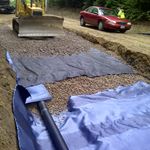
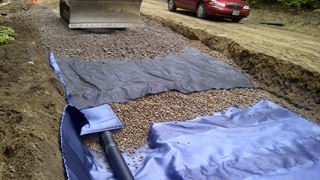
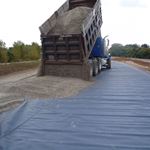
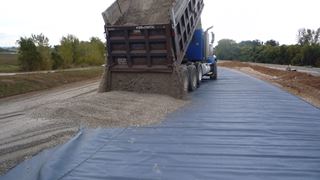
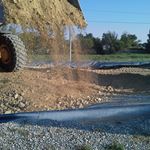
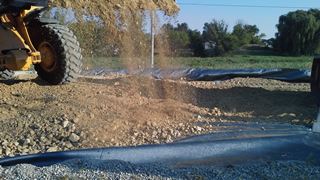
.jpg?w=40&h=40&action=crop)